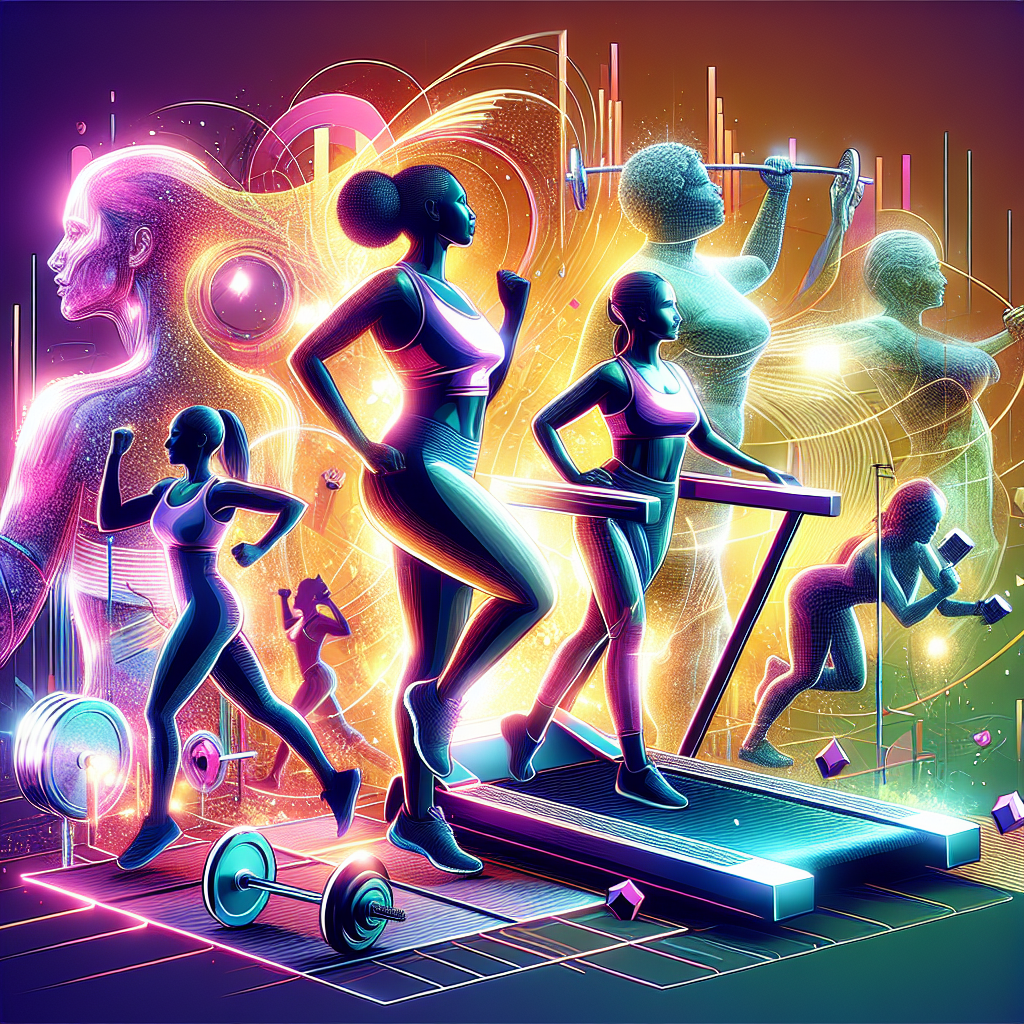In 2025, achieving effective fitness is more attainable than ever thanks to innovative workout routines that cater to diverse goals, lifestyles, and preferences. Whether you’re aiming to build strength, improve cardiovascular health, enhance flexibility, or simply maintain overall wellness, the following workout approaches offer structured, evidence-based programs designed to maximize your results. This article explores a variety of effective workout routines, and provides insights on their benefits, implementation strategies, and expert tips to support your fitness journey.
1. The Rise of Functional Fitness
Functional fitness focuses on exercises that mimic everyday movements, improving overall body strength, coordination, and balance. In 2025, this approach has gained prominence due to its practical applications in daily life.
Key Elements of Functional Fitness:
- Core Stability: Strengthening the core to support essential movements such as lifting, bending, and twisting.
- Balance and Coordination: Engaging in exercises that require stability and coordination, essential for injury prevention.
- Compound Movements: Utilizing multiple muscle groups to enhance overall strength and endurance.
Sample Functional Workout Routine:
| Exercise | Sets | Reps |
|---|---|---|
| Squats (bodyweight) | 3 | 12-15 |
| Push-ups | 3 | 10-12 |
| Lunges | 3 | 12/leg |
| Plank | 3 | 30-60 sec |
| Kettlebell swings | 3 | 10-15 |
Tips for Success:
- Start Gradually: Begin with basic movements before advancing to complex exercises.
- Focus on Form: Prioritize technique over quantity to maximize benefits and prevent injury.
- Incorporate Mobility Work: Integrate stretching and mobility exercises to enhance performance and recovery.
2. High-Intensity Interval Training (HIIT)
HIIT continues to dominate the fitness scene in 2025 due to its efficiency in burning calories and improving cardiovascular fitness in shorter periods.
Benefits of HIIT:
- Time-Efficient: Achieve maximum results in minimal time, making it ideal for busy schedules.
- Metabolic Boost: Elevates metabolism even after the workout, promoting continued fat loss.
- Versatile Workouts: Easily adjustable to suit different fitness levels and preferences.
Sample HIIT Workout:
| Exercise | Duration |
|---|---|
| Jumping jacks | 30 seconds |
| Rest | 15 seconds |
| Burpees | 30 seconds |
| Rest | 15 seconds |
| Mountain climbers | 30 seconds |
| Rest | 15 seconds |
| Repeat for 20-30 minutes |
Tips for Maximizing HIIT:
- Keep Hydrated: Drink water before, during, and after workouts to maintain performance.
- Choose the Right Music: Upbeat tracks can enhance motivation and energy levels.
- Incorporate Variety: Regularly change exercises to keep your routine fresh and challenging.
3. Strength Training Essentials
Strength training remains a cornerstone of effective fitness in 2025, helping individuals build muscle, improve bone density, and enhance metabolic rate.
Types of Strength Training:
- Free Weights: Utilizing dumbbells, barbells, and kettlebells for versatile workouts.
- Resistance Bands: Perfect for those starting out or looking for low-impact options.
- Bodyweight Exercises: Ideal for flexibility and can be done anywhere.
Sample Strength Training Routine:
| Exercise | Sets | Reps |
|---|---|---|
| Deadlifts | 4 | 6-8 |
| Bench Press | 3 | 8-10 |
| Pull-ups | 3 | 6-10 |
| Overhead Press | 4 | 8 |
| Leg Press | 3 | 10 |
Tips for Effective Strength Training:
- Progressive Overload: Gradually increase weights or resistance to continue seeing gains.
- Rest and Recovery: Allow adequate time for muscle recovery and growth.
- Consider Professional Guidance: Working with a certified trainer can optimize your strength training approach.
4. Integrating Cardio for Heart Health
Cardiovascular exercise is essential for heart health and fat loss. In 2025, integrating various forms of cardio can keep routines engaging and effective.
Types of Cardiovascular Exercise:
- Steady-State Cardio: Activities like jogging, cycling, or swimming at a consistent pace.
- Interval Training: Alternating between high-intensity and moderate-intensity efforts.
- Sports and Activities: Engaging in team sports or active hobbies that provide a fun cardiovascular workout.
Sample Cardio Routine:
| Activity | Duration |
|---|---|
| Jogging or brisk walking | 30-45 minutes |
| Cycling | 45-60 minutes |
| Swimming | 30-45 minutes |
| Group Classes (Zumba, Spin) | 60 minutes |
Tips for Incorporating Cardio:
- Mix It Up: Combining different forms of cardio prevents boredom and works various muscle groups.
- Target Heart Rate: Aim to exercise within 50-85% of your maximum heart rate for optimal benefits.
- Listen to Your Body: Pay attention to fatigue or discomfort and adjust intensity as needed.
5. Embracing Mind-Body Connection
Routines that incorporate mind-body practices like yoga and Pilates are trending in 2025 as a means to enhance flexibility, concentration, and overall wellness.
Benefits of Mind-Body Practices:
- Stress Relief: These practices can significantly reduce stress and anxiety levels.
- Improved Flexibility and Balance: Focusing on controlled movements enhances flexibility and coordination.
- Enhanced Mental Clarity: Mindfulness incorporated in these sessions can improve mental well-being.
Sample Mind-Body Workout:
| Exercise | Duration |
|---|---|
| Yoga (Hatha or Vinyasa) | 60 minutes |
| Pilates Mat Work | 45 minutes |
| Tai Chi | 60 minutes |
Tips for Mind-Body Practices:
- Set a Routine: Consistency is key for long-term benefits—aim for 2-3 sessions per week.
- Create a Calm Environment: A peaceful setting enhances relaxation and focus during practice.
- Practice Breath Control: Mindful breathing techniques improve exercise performance and relaxation.
6. The Importance of Recovery and Nutrition
After workouts, recovery and nutrition play vital roles in achieving fitness goals. Emerging trends in 2025 emphasize the need for balanced nutrition and structured recovery practices.
Elements of Recovery:
- Active Recovery: Engaging in light movement, like walking or stretching, after intense workouts to support recovery.
- Sleep Hygiene: Prioritizing quality sleep to optimize recovery and muscle growth.
- Hydration: Drinking plenty of water before, during, and after workouts.
Nutritional Strategies:
| Food Group | Benefits |
|---|---|
| Lean Proteins | Muscle repair and growth |
| Whole Grains | Sustained energy release |
| Fruits and Vegetables | Vitamins, minerals, and antioxidants |
| Healthy Fats | Support heart and brain health |
Tips for Nutrition and Recovery:
- Post-Workout Nutrition: Consume a balanced meal rich in protein and carbs within 30-60 minutes post-exercise.
- Listen to Your Body: Adjust caloric intake based on activity levels and workout intensity.
- Consider Supplements Carefully: Consult with healthcare professionals before taking supplements.
7. Innovating With Technology
As technology rapidly evolves, fitness applications and wearable devices play a crucial role in 2025 fitness routines. These tools provide valuable insights for users, enabling more tailored workouts and progress monitoring.
Popular Fitness Technologies:
- Fitness Apps: Applications that offer workouts, nutrition tracks, and community support.
- Wearable Devices: Fitness trackers and smartwatches monitor heart rate, calories burned, and activity levels.
- Virtual and Augmented Reality: Engaging platforms that create immersive exercise experiences.
Utilization of Technology:
| Device Type | Benefits |
|---|---|
| Smartwatches | Real-time data tracking |
| Fitness Apps | Workout planning and tracking |
| VR Fitness Programs | Enhanced motivation and engagement |
Tips for Using Technology Wisely:
- Set Clear Goals: Use data to set fitness goals that are measurable and attainable.
- Balance Screen Time: Limit excessive time spent on devices during workouts to maintain focus.
- Engage with Communities: Online forums and social media groups can provide motivation and accountability.
8. Community and Accountability in Fitness
In today’s fitness landscape, the power of community and accountability can dramatically enhance motivation and performance. Group classes, online fitness communities, and workout buddies foster a sense of belonging and encouragement.
Benefits of Community in Fitness:
- Increased Motivation: Exercising with others can push you to work harder and reach your goals.
- Shared Knowledge: Engaging with knowledgeable individuals provides tips and advice to improve performance.
- Emotional Support: A supportive environment can help maintain commitment during challenging times.
Ways to Build Community:
- Group Classes: Join classes that appeal to you to meet like-minded individuals.
- Online Challenges: Participate in fitness challenges or virtual races for a sense of camaraderie.
- Social Media Groups: Engage with active communities focused on fitness and wellness.
Tips for Building Accountability:
- Workout Buddy: Find a friend to join you; mutual encouragement can enhance adherence to routines.
- Set Reminders: Use apps and calendars to schedule workouts and track progress.
- Share Your Journey: Leverage social media to share achievements and form connections with others.
Conclusion
Effective fitness in 2025 is characterized by a diverse array of workout routines that cater to individual needs and preferences. From functional fitness to innovative technologies, these methods not only optimize physical performance but also promote mental well-being. Incorporating varied approaches—HIIT, strength training, mind-body practices, and community engagement—ensures a holistic exercise regimen that supports overall health. As you embark on your fitness journey, remember to listen to your body, prioritize recovery, and leverage resources that resonate with your personal goals for sustainable results.
This structured overview emphasizes various aspects of fitness routines in 2025, incorporating actionable advice and insights that can help readers design their own effective workout plans. The integration of technology, nutrition, and community enhances its relevance, making it a practical guide for anyone looking to improve their fitness.












